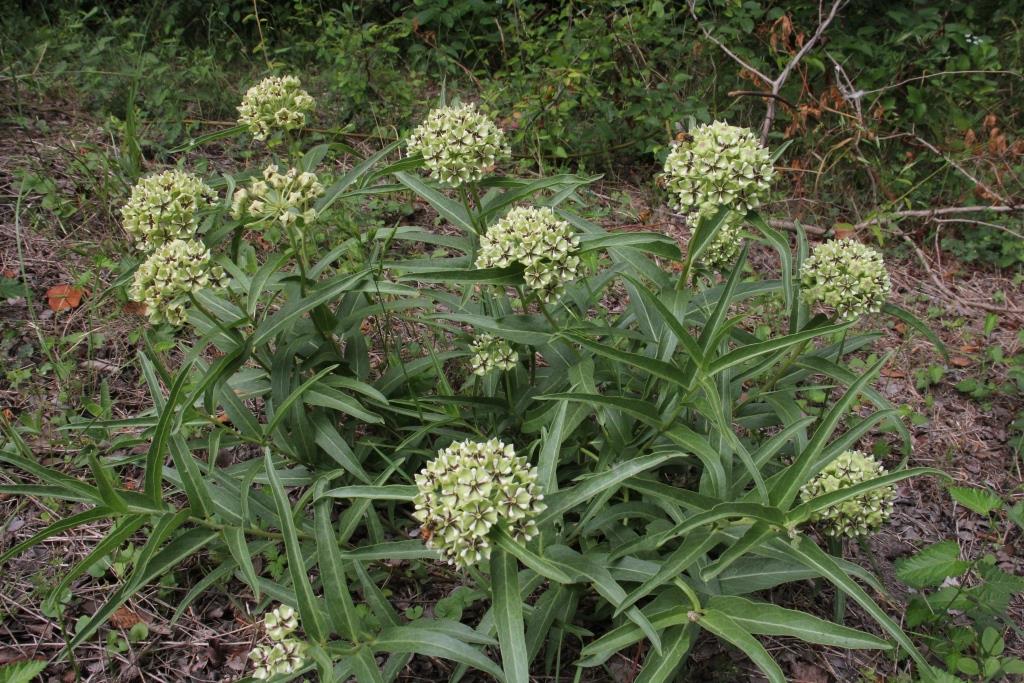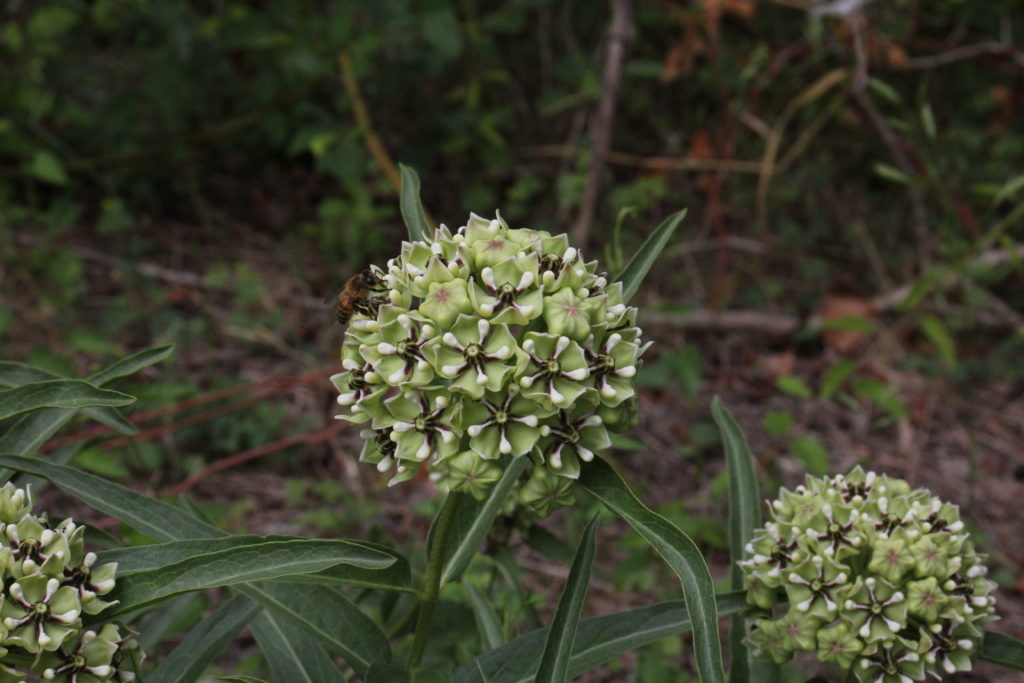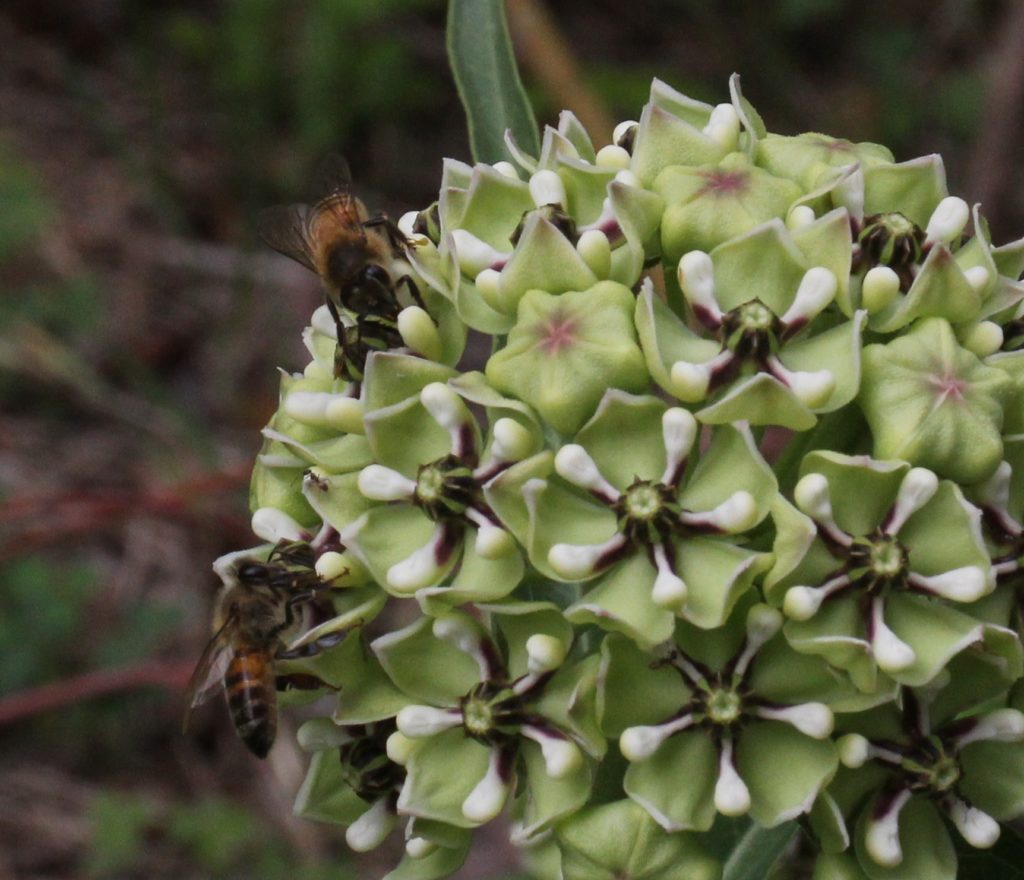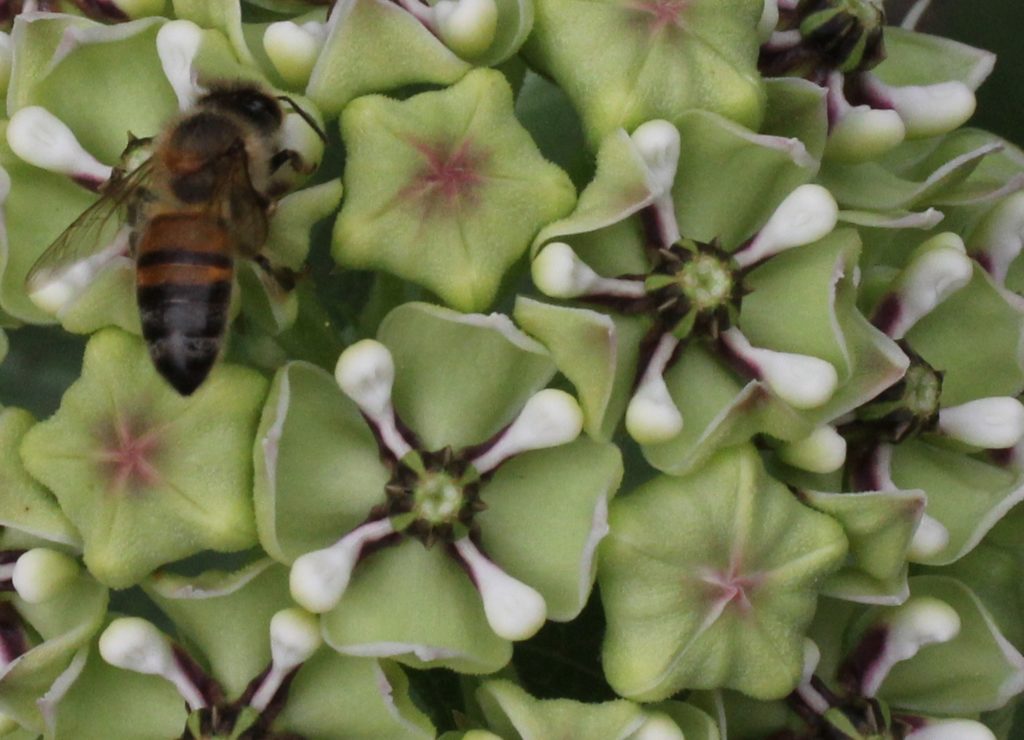I made a special trip out yesterday to beef up my photo portfolio of this wonderful species, Asclepias asperula sbsp. capricornu, Antelope Horns Milkweed. Of course I meant to spend just a few minutes, but I ended up taking quite a while since I found “too many” interesting other things while I was there.

I promise a longer post later all about this species, but while I was sorting photos (and not at all in the field! ) I noticed something odd about this one milkweed flower cluster.

All over this piece of land, thousands of Antelope Horns Milkweed specimens bloom. For the most part, they follow the simple time-honored rule: parts of a milkweed flower occur in fives. But, if you look closely, every now and then there is a renegade, a rule breaker, a maverick. On this plant, almost all the flowers adhere to the traditional rule of fives, but there is one lone flower that doesn’t display the usual pentagons and five pointed stars. It has squares instead of pentagons, four-armed equilateral crosses instead of stars, and four petals, and four hoods—not five.

It’s only one flower out of the whole head, and it appears to be perfectly formed other than the count of parts, but it’s an anomaly, and it makes me wonder when and why this one lone flower went off the rails of genetic determination and did something very different than all its neighbors.

There are other interesting things about this field, starting with the fact that it hosts five species of milkweeds. I have seen probable hybrids, strangely colored specimens and other things that ought to be studied. Today, I have just enough time to wonder, “Why 4?”
